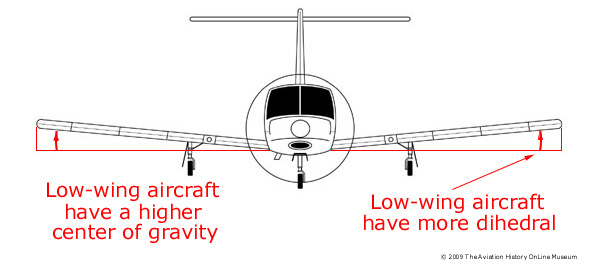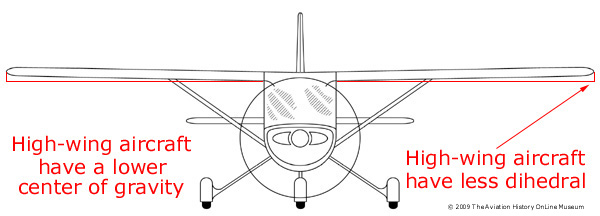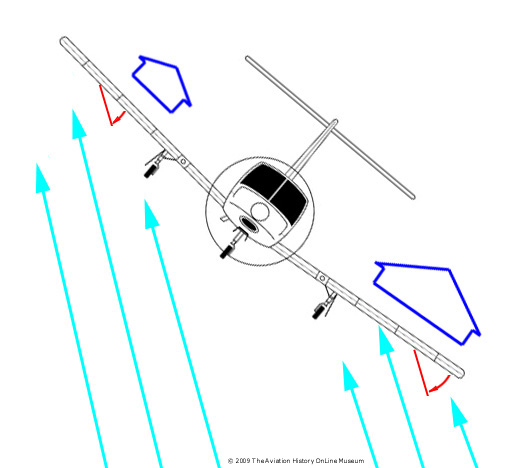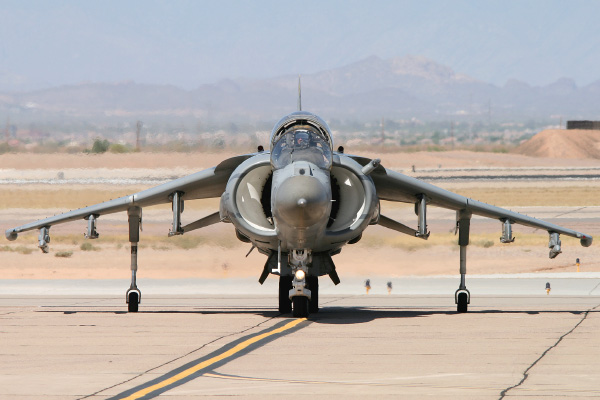| Wing Dihedral |  | ||
|---|---|---|---|
 | |||
| Wing Dihedral is the upward angle of an aircraft's wing, from the wing root to the wing tip. The amount of dihedral determines the amount of inherent stability along the roll axis. Although an increase of dihedral will increase inherent stability, it will also decrease lift, increase drag, and decreased the axial roll rate. As roll stability is increased, an aircraft will naturally return to its original position if it is subject to a brief or slight roll displacement. Most large airliner wings are designed with dihedral. On low-wing aircraft, the center of gravity is above the wing and roll stablity is less pronounced. This factor requires the use of greater dihedral angles in low-wing airplanes. | |||
 | |||
| On high-wing aircraft, the center of gravity is below the wing, so less dihedral is required. | |||
 | |||
| On low-wing aircraft with wing dihedral, when a wing rolls downward, the relative wind on the descending wing becomes a component of the forward motion of the airplane and the downward motion of the wing. This produces a higher angle of attack on the descending wing and consequently more lift. | |||
 | |||
| Highly maneuverable fighter planes have no dihedral and some fighter aircraft have the wing tips lower than the roots, giving the aircraft a high roll rate. A negative dihedral angle is called anhedral. The AV-8B Harrier II above has a negative dihedral or anhedral | |||
Pages
Popular Posts
-
Wing Dihedral Wing Dihedral is the upward angle of an aircraft's wing, from the wing root to the wing tip. The amount of dihe...
-
Details of Modern Airships - 1927 Fig. 315.--The U. S. Navy Rigid Dirigible Los Angeles Held Down by Landing Party Prior to Mooring at S...
-
Wind Drift Drift is caused by the wind effect on an aircraft and is defined as the angle between the aircraft heading and the airc...
-
Flight Control Surfaces - Elevons Elevon: Delta winged aircraft can not use conventional 3 axis flight control systems because o...
-
Ground Effect in Aircraft Ground effect is caused by ground interference with airflow patterns around an aircraft when the aircraf...
-
Angle of Attack Angle of Attack is used to define the angle between the wing chord line and the flight path—not the ground. During la...
-
Mechanics working on an Allison V-1710 engine for a Lockheed P-38 Lightning . The only American liquid-cooled engine to see s...
-
Laminar Flow is the smooth, uninterrupted flow of air over the contour of the wings, fuselage, or other parts of an aircraft in fl...
-
Relative Wind The relative wind is a relationship between the direction of airflow and the aircraft wing. In normal flight circumsta...
Saturday, 22 February 2014
Subscribe to:
Post Comments (Atom)

No comments:
Post a Comment